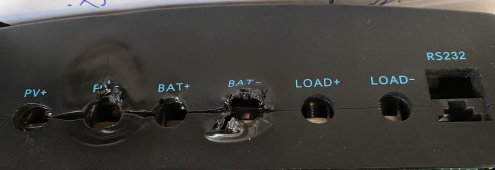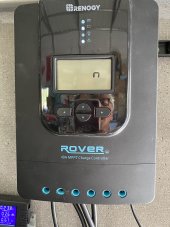I think you're very close to getting through this thick skull of mine...When overpaneling (or not) you must be sure to never exceed the max PV input voltage of the SCC nor the max input Isc of the SCC.
When you "overpanel", you're bringing in more watts than the SCC is technically rated for, but if you don't exceed the maximum amps OR volts, it will only take in the wattage for which it is rated? Is the excess wattage dissipated as heat? I would like to keep charging to roughly .2C which is why I bought a 20amp SCC for my 100ah battery.
I only have one panel up right now. I checked it several times during near-perfect conditions and it showed 13.3 to 13.5 volts and 10 to 11.5 amps coming in, so roughly 150 watts out of a 180w panel. I can live with 83% efficiency. If I put the other panel up and connect them in series, the voltage should double to around 27 and the amps stay at the same 10 to 11.5, right? That would result in 270 to 300 watts, which is scarcely more than the 260 watts for which it is rated. Those numbers seem very safe, to me. It's also worth mentioning that these panels are mounted with a lot of trees around, so they won't both be getting full sun for very long on any given day.
I'm going to mount the 2nd 180w panel, connect them in series and monitor the output very closely. If it scales in a linear fashion, I should get a potential of around 275 watts for short periods of time, which is just barely more than the unit is rated to handle. Does that sound reasonable?




